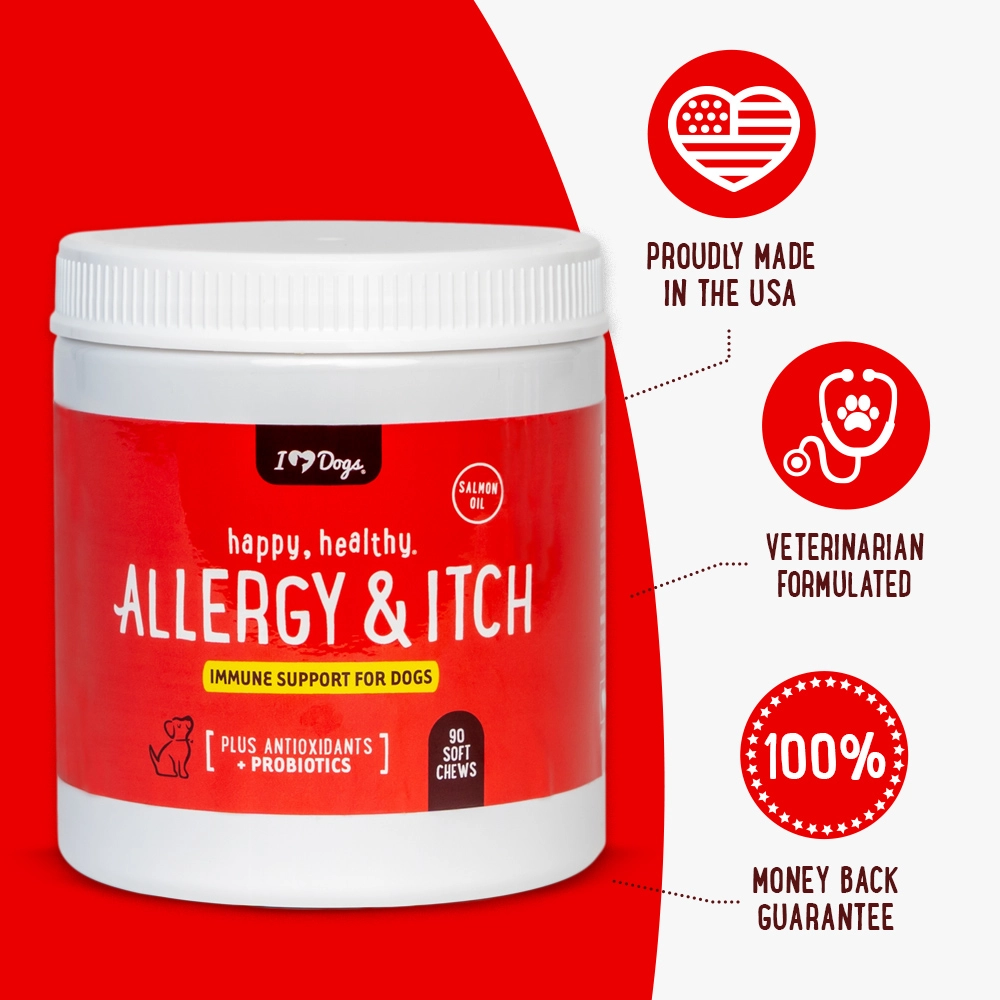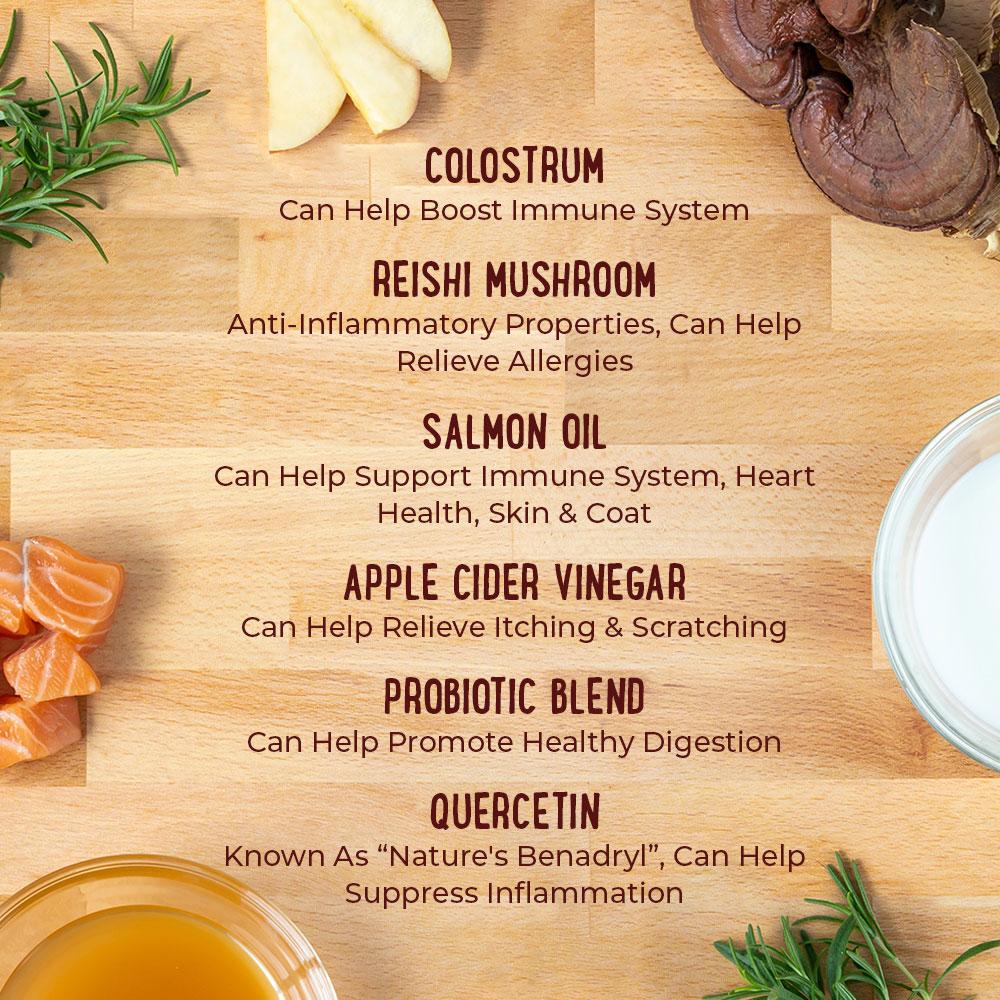Have you heard about lick granulomas? If your dog already has one, you may already know how difficult they can be to treat. If you have never heard of them before, what do you need to know in order to prevent your dog from getting one? What is a lick granuloma? What causes them? How are they treated? Is there anything that can be done to prevent them? Here are 5 things you should know about lick granulomas – hopefully before your dog ever develops one.
#1 – What is a lick granuloma?
A lick granuloma is an irritated patch of skin caused by excessive licking – usually on the front legs – that can remove hair and affect every single layer of skin. It’s usually accompanied by bacterial or yeast infections. According to PetMD:
“The skin is so deeply affected that even down to the base layer of the skin there can be found under the microscope little pockets of bacteria, broken hair follicles, plugged and scarred oil glands and dilated and inflamed capillaries. And if these skin lesions are removed surgically, the dog simply licks at the sutures or incision line after the surgery heals, thus creating a brand new granuloma right where the original one was!”
VCA Hospitals adds:
“Also known as acral lick dermatitis, this problem begins as an area of hair loss and reddened skin most commonly on the top of the wrist or carpal joint on the front legs. It often looks like a ‘hot spot.’ These differ from ‘hot spots‘ in that they persist despite treatment. They are often associated with chronic, persistent licking, especially when the pet is alone or when the family is sleeping.”
#2 – What causes the dog to lick so much?
A variety of factors can contribute to a dog licking so much that they start removing layers of skin. Trying to find the underlying cause of the licking may help decide on a course of treatment. Some factors thought to start the cycle of a lick granuloma include:
–Allergies caused by food, environmental factors, or something else
-A minor irritation as the result of a foxtail, splinter, cut, scrape, bee sting, or anything else that might draw the dog’s attention
-Bone or joint pain such as arthritis, fractures, surgery, or peripheral neuropathy
-Hypothyroidism, which is especially common in Black Labs
–Boredom, stress, anxiety, or OCD. Licking can be a method of self-soothing, and some dogs react to psychological factors by obsessively licking as an outlet for their pent-up emotions.
#3 – Are some breeds more prone to lick granulomas than others?
Medium and large breeds are more likely to develop lick granulomas than small dogs. Doberman Pinschers, German Shepherds, Golden Retrievers, Labrador Retrievers, Irish Setters, Great Danes, and Weimaraners, in particular, seem to be more prone to lick granulomas than other breeds.
#4 – How are they treated?
Unfortunately, lick granulomas are incredibly difficult to treat. Covering the spot of the original granuloma frequently causes a dog to start licking another spot that they can still reach, causing a secondary granuloma. If your dog has an underlying allergy or injury, treating those may help resolve the granuloma. Other treatments may include:
-Lasers can be used to remove affected tissue by vaporizing the surface layers of the skin. During this process, there is minimal bleeding and nerve tissue is sealed, resulting in little discomfort that may cause the dog to start licking in the same spot again.
-Long-term antibiotics are often used over the course of 3-6 months to help heal the infection.
-Cortisone creams applied once or twice daily can help relieve itching that may cause the dog to lick the wound.
-Upgrade your dog’s diet and include supplements. According to PetMD:
“Many types of dermatological problems are avoided if the dog is consuming an optimum diet. If your dog seems to lack good coat and skin health, consider upgrading the diet to a meat-based ingredient formula, and adding a supplement, such as omega fatty acids, can make a very real difference.”
-Acupuncture has been shown to have a wide variety of applications, and it may make a big difference in helping your dog to recover from a lick granuloma.
-Topical and oral anti-inflammatory medications can help relieve swelling.
-Anti-anxiety medications may be prescribed if psychological problems seem to be the underlying cause.
-Increasing activity and interaction levels can help prevent boredom and relieve pent-up energy in more productive ways. Try taking your dog for more or longer walks and adding a variety of interactive toys to keep your dog active and his mind occupied.
Dogs Naturally also recommends trying one of the following topical remedies:
-
“Manuka honey applied to the wound three to four times a day. You’ll want to have an E-collar or Bite Not collar in place before you apply medical honey to your dog’s leg.
-
Willard’s Water sprayed on the wound six to eight times daily
-
Bee propolis salve (Pavia Natural Wound Care Cream) applied twice daily
-
Fresh aloe gel applied three to four times daily
-
Calendula or hypericum tincture or gel applied three to four times daily
-
Chamomile tea bag poultice: steep one herbal teabag in a half cup of hot water, let cool. Add 20 drops colloidal silver. Refrigerate until the infusion chills. You can apply the cold teabag directly on the wound, securing it with a light wrap. If your dog won’t tolerate this then dab the solution directly on the wound six to eight times daily
#5 – Can lick granulomas be prevented?
If you have a dog breed that is prone to lick granulomas, you may be wondering if there is anything you can do to prevent a lick granuloma from forming in the first place. Luckily, there are a few things you can do to prevent lick granulomas. Dogs Naturally recommends:
“The best way to prevent your dog from developing acral lick dermatitis is to deal with obsessive licking behavior at the first sign of it. Some lick granulomas can develop very quickly – within a matter of hours. Others take longer to appear.
-
If you can avoid it, don’t wait until there’s an obvious injury to your dog’s skin before seeking advice from your veterinarian.
-
Develop the habit of running your hands over your dog – especially down the front legs – to check for damp fur or sensitivity.
-
If your dog tends to place himself outside your line of vision, check on him frequently to ensure he isn’t hiding his obsessive licking from you. Stained fur is a sign he’s licking.
-
If he’s licking a certain spot but there’s no injury yet to the skin, try lightly wrapping the area in an Ace bandage to discourage further licking. Sprinkling the area with an all-natural lick deterrent such as lavender essential oil can also reduce the urge to lick.
-
You’ll still need to see your holistic veterinarian to identify and deal with the underlying reasons for the licking, but in the meantime, anything you can do to prevent your dog from self-injury will be beneficial.”
Treating lick granulomas can be extremely frustrating, but with a lot of patience and guidance from your veterinarian, you can help heal your dog and increase his quality of life.
(H/T: PetMD, Dogs Naturally, VCA Hospitals)


 Toledo, United States.
Toledo, United States.